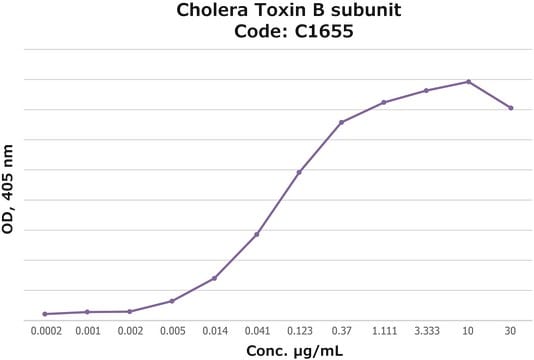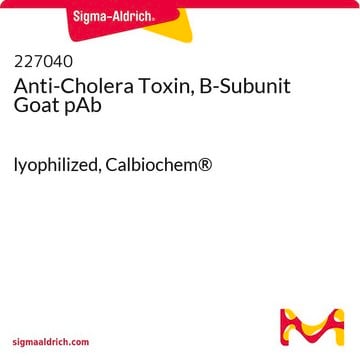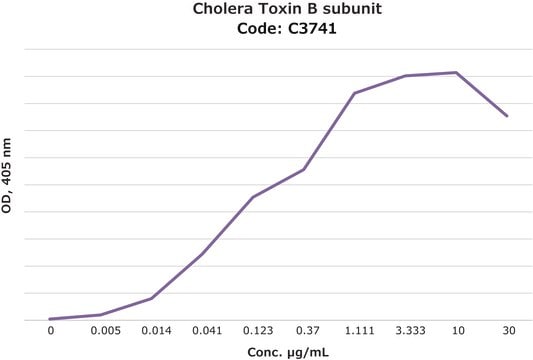C9972
Sous-unité B de la toxine cholérique
biotin conjugate, lyophilized powder
Synonyme(s) :
CTB
About This Item
Produits recommandés
Conjugué
biotin conjugate
Niveau de qualité
Forme
lyophilized powder
Poids mol.
~12 kDa
Composition
Protein, ~40% Lowry
Température de stockage
2-8°C
Chaîne SMILES
CCOc1ccccc1C(=O)Nc2ccc(Cl)c(c2)C(F)(F)F
InChI
1S/C16H13ClF3NO2/c1-2-23-14-6-4-3-5-11(14)15(22)21-10-7-8-13(17)12(9-10)16(18,19)20/h3-9H,2H2,1H3,(H,21,22)
Clé InChI
YDXZSNHARVUYNM-UHFFFAOYSA-N
Vous recherchez des produits similaires ? Visite Guide de comparaison des produits
Description générale
Application
- in immunofluorescence
- in the analysis of major histocompatibility complex (MHC) class II lipid raft partitioning
- in live cell three-dimensional tracking of SH-SY5Y human neuroblastoma cells
- to assess the toll-like receptors (TLR) and FcRγ (Fc receptor γ chain) – CARD9 (caspase recruitment domain family member 9) activation by cholera Toxin B (CTB)
Actions biochimiques/physiologiques
Qualité
Forme physique
Remarque sur l'analyse
Mentions de danger
Conseils de prudence
Classification des risques
Aquatic Chronic 3
Code de la classe de stockage
11 - Combustible Solids
Classe de danger pour l'eau (WGK)
WGK 3
Point d'éclair (°F)
Not applicable
Point d'éclair (°C)
Not applicable
Équipement de protection individuelle
Eyeshields, Gloves, type N95 (US)
Certificats d'analyse (COA)
Recherchez un Certificats d'analyse (COA) en saisissant le numéro de lot du produit. Les numéros de lot figurent sur l'étiquette du produit après les mots "Lot" ou "Batch".
Déjà en possession de ce produit ?
Retrouvez la documentation relative aux produits que vous avez récemment achetés dans la Bibliothèque de documents.
Les clients ont également consulté
Notre équipe de scientifiques dispose d'une expérience dans tous les secteurs de la recherche, notamment en sciences de la vie, science des matériaux, synthèse chimique, chromatographie, analyse et dans de nombreux autres domaines..
Contacter notre Service technique










